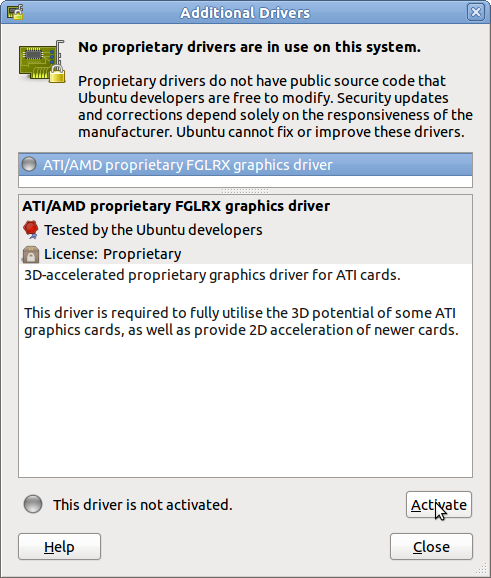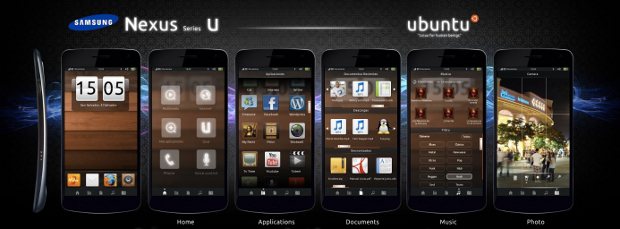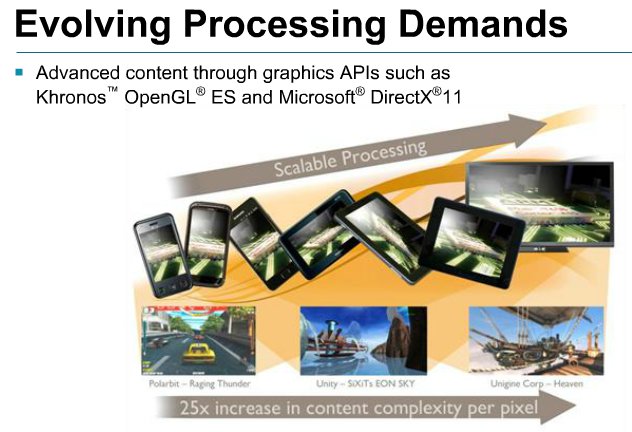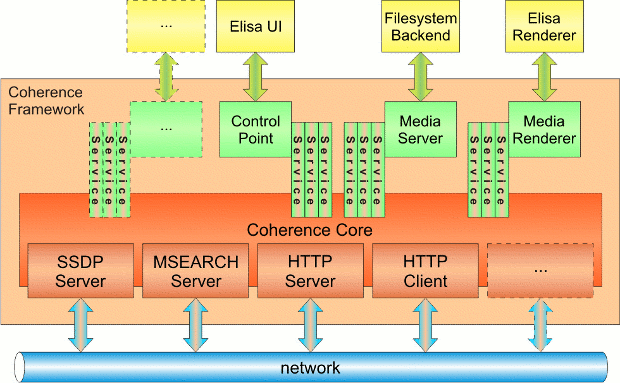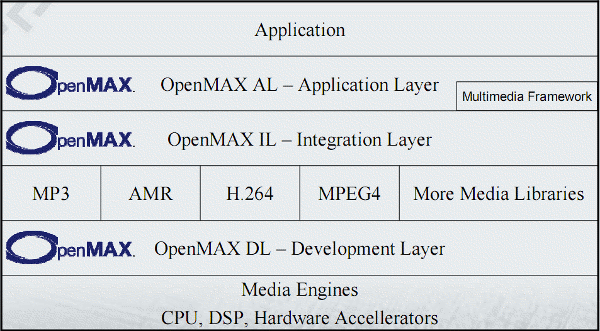I’ve recently bought an ATI Radeon HD5450 in order to be able to use multiple displays in Windows XP and Ubuntu 11.04. I’ll explain how to install and configure the ATI drivers in order to use multiple displays and extend the desktop on two monitors. The first thing to do is to install the proprietary ATI drivers and Catalyst Control Center. Click on the icon at the top right of the screen and select “System Settings” in the drop down menu. Then click on “Additional Drivers”, Ubuntu should detect your ATI graphics card automatically and show the following: Click on “Activate” to download and install ATI/AMD proprietary FGLRX graphics driver and Catalyst Control Center (CCC). Alternatively, you could also download the latest linux ATI driver (version 11.12) on ATI website and run ./ati-driver-installer-11-12-x86.x86_64.run After installation, you may have to restart you computer. Once the drivers are installed, if you use […]
Ubuntu Smartphone and Television UI Mockups
Ubuntu developers announced they wanted to port their OS beyond desktop by 2014, and would like to use it on smartphones, tablets and televisions. Following the announcement, the community has made a few mockup. Here are a few samples: Unity Mobil Mockup by JMMING: I quite like this design (Samsung Nexus Series U) similar to Android with the Ubuntu theme. My Ubuntu Phone by Musl1m: muls1m mockup is also based an icon grid, but keeps the Ubuntu icon bar on the left. Ubuntu with mobile Unity by ginjaninja405 This mockup is similar to the one above, but the icon bar can be located either to the left or to the right, and the bottom image shows phone related notifications such as missed phone calls, SMS and Facebook messages and notifications. There are also other interesting Ubuntu smartphones mockup, including a full phone design (casing + UI) based on Ubuntu theme. If […]
Metaio Releases Mobile Augmented Reality SDK
Yesterday Qualcomm released QCAR SDK 1.5 Beta, and today Metaio announces its Mobile SDK 3.0 for augmented reality application development on Android and iOS. The metaio Mobile SDK brings with it patented gravity-awareness and visual tracking technology for 2D and 3D objects, now three times more robust than the previous version. These features combined will ensure AR experiences that are more natural, more intuitive, and more realistic, says the company. Metaio recently announced formal collaborations with ARM, ST-Ericsson and Texas Instruments to fully take advantage of the GPU hardware provided by those companies and the Mobile SDK is optimized for ARM Mali GPU (both graphics and compute), ST Ericsson Nova and NovaThor mobile processors and TI OMAP processors. The metaio Mobile SDK also includes its own 3D rendering engine – now with advanced shader support – and a plugin to make use of Unity3D (3D game engine). You can watch […]
Midgard architecture for Embedded GPUs (Mali-T604 / Mali T658)
I’ve attended a webinar entitled “Harness the power and flexibility of the Midgard architecture for Embedded GPUs” presented Steve Steele, Product Manager at ARM Media Processing Division and sponsored by EETimes. Steve starts to talk about the current GPU architecture “Utgard” used in Mali-200, Mali-300 and Mali-400MP which allows resolutions up to 1080p and are used in many smartphones today including Samsung Galaxy S2 (Mali-400MP) which provides great graphics performance. He then explains how mobile devices are used today and what performance we may except in the future: Mobile As Main compute platform: New UI and Augmented Reality Social Networks and emails Content Creation/consumption 1 Device to multiple screen (e.g LCD screen and TV via HDMI) Evolving Processing Demand: Graphics Complexity multiplied by 25 Increase in screen size (1080p resolution support). Graphics API: Khronos OpenGL ES, Microsoft DirectX 11 Compute API: OpenCL, Renderscript Compute and Direct Compute. After this overview, […]
WebP Image Format Could Replace JPEG, PNG and GIF
In September 2010, Google announced the WebP image format with lossy compression. Since last month, WebP can also support animation, ICC profile, XMP metadata and tiling. Today, it announced lossless compression and transparency support. WebP could be used as an alternative to JPEG, with 25–34% better compression compared to JPEG images at equivalent SSIM index as well as PNG as it now supports lossless compression and transparency – also known as alpha channel – in both the lossless and lossy modes. On average, Google got a 45% reduction in size when starting with PNGs found on the web, and a 28% reduction in size compared to PNGs that are re-compressed with pngcrush and pngout. Photos typically encoded as JPEG can be encoded in WebP lossy mode to achieve smaller file size. Icons and graphics can be encoded better in WebP lossless mode than in PNG. WebP lossy with alpha can […]
DLNA/UPnP Linux Server with Coherence
Coherence is a DLNA/UPnP Media Server written in Python which exports local files or online media to UPnP clients. Coherence fetch the media files from several sources such as: Local applications media collections, like those from Rythmbox or Banschee, Audio-CD or DVB Online services like Flickr, last.fm, YouTube, Picasa Web Albums and other. Other sources can also be added thanks to Coherence plug-in architecture. The media server supports transcoding (currently experimental) that is to convert media files in another format. Coherence toolkit also contains other packages such as: Coherence-Config: a cross-platform GUI frontend for ‘Coherence’. Cadre: a picture DLNA/UPnP MediaRenderer which can display pictures from the local filesystem or from a MediaServer. Mirabeau: An application level proxy for UPnP devices which allows to share your UPnP content between two or more local networks over the Internet. It uses XMPP as a transport (work in progress). UPnP-Inspector: a graphical UPnP Device […]
Enable OpenGL 2.0 and WebGL for Intel GMA3150 in Ubuntu
I wanted to use WebGL in my Acer Aspire One D255E netbook that uses an Intel GMA 3150 onboard graphics card, but it did not work in Chromium nor Firefox. WebGL requires OpenGL 2.0 support, but I found out I only had support for OpenGL 1.4:
|
1 2 |
glxinfo | grep -i "OpenGL version" OpenGL version string: 1.4 Mesa 7.7.1 |
But I found out it was possible to enable OpenGL 2.0 for GMA 3150 in Linux by installing and running driconf:
|
1 2 |
sudo apt-get install driconf driconf |
and clicking on “Enable limited ARB_fragment_shader support on 915/945.” and “Enable stub ARB_occlusion_query support on 915/945.” options. They are not enabled by default because they do cause problems. After those two options were enabled, OpenGL 2.0 was enabled.
|
1 2 |
glxinfo | grep -i "OpenGL version" OpenGL version string: 2.0 Mesa 7.7.1 |
But I still could not use WebGL in either Chromium nor Firefox, so I decided to install the latest version of Mesa (7.11) with indirect rendering (software) enabled with libOSMesa:
|
1 2 3 4 5 6 7 |
sudo apt-get install libffi-dev wget ftp://ftp.freedesktop.org/pub/mesa/7.11/MesaLib-7.11.tar.bz2 tar xjvf MesaLib-7.11.tar.bz2 cd Mesa-7.11 ./configure --enable-os-mesa --prefix=/usr make make install |
Even with the latest Mesa library, I could not use WebGL […]
OpenMAX (Open Media Acceleration)
OpenMAX (Open Media Acceleration) is a royalty-free, cross-platform set of C-language programming interfaces that provides abstractions for routines especially useful for audio, video, and still images. OpenMAX standard is managed by the non-profit technology consortium Khronos Group. OpenMAX allows developers to take advantages of hardware media decoding/encoding. For example, If you want to play video using Raspberry Pi hardware (VideoCore IV GPU in Broadcom BCM2835) you’ll have to use OpenMAX IL. OpenMAX provides three layers of interfaces: Application Layer (AL): Open standard for accelerating the capture, and presentation of audio, video, and images in multimedia applications on embedded and mobile devices. Integration Layer (IL) : API defining a standardized media component interface to enable developers and platform providers to integrate and communicate with multimedia codecs implemented in hardware or software. Development Layer (DL): APIs containing a comprehensive set of audio, video and imaging functions that can be implemented and optimized […]


